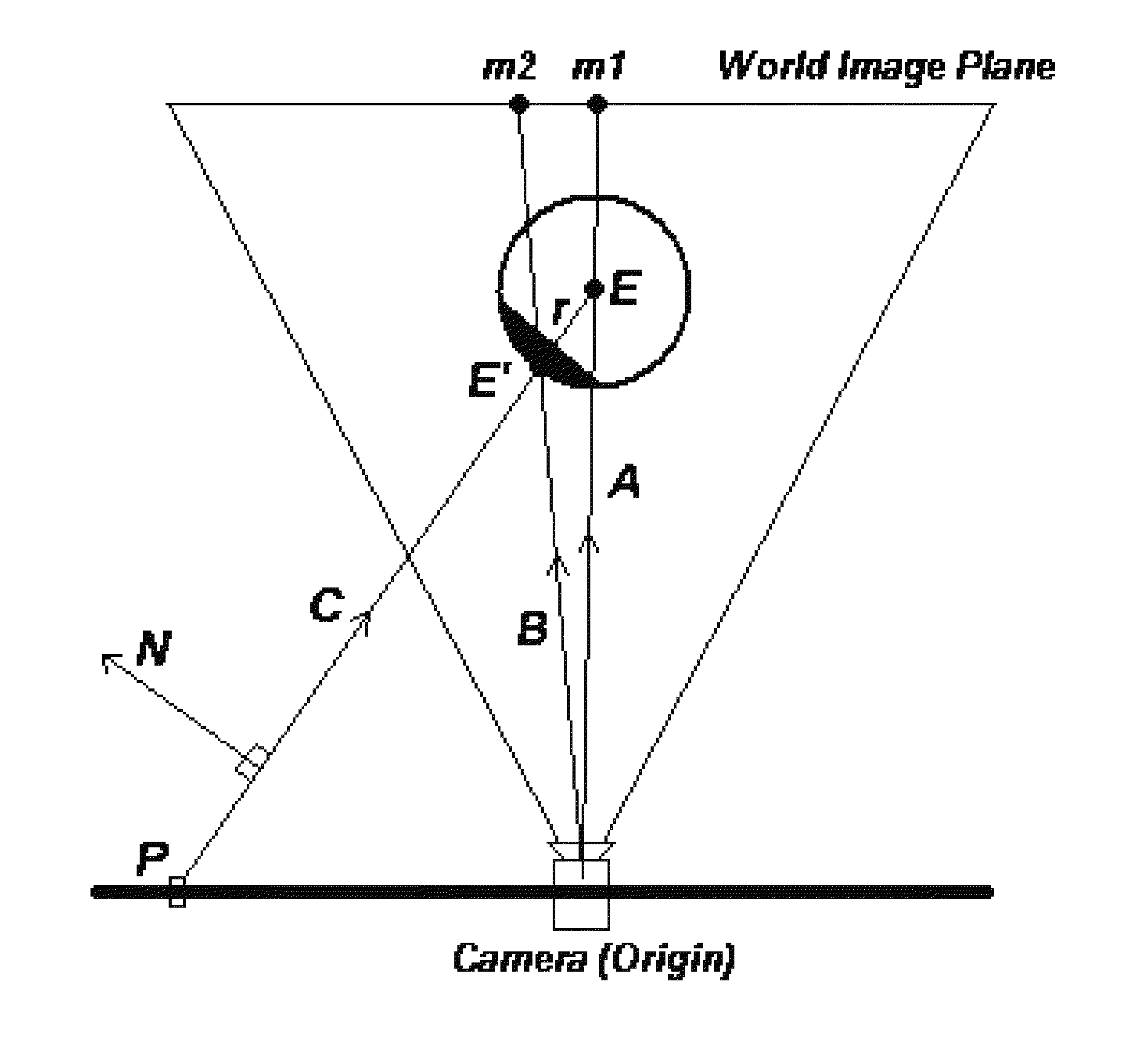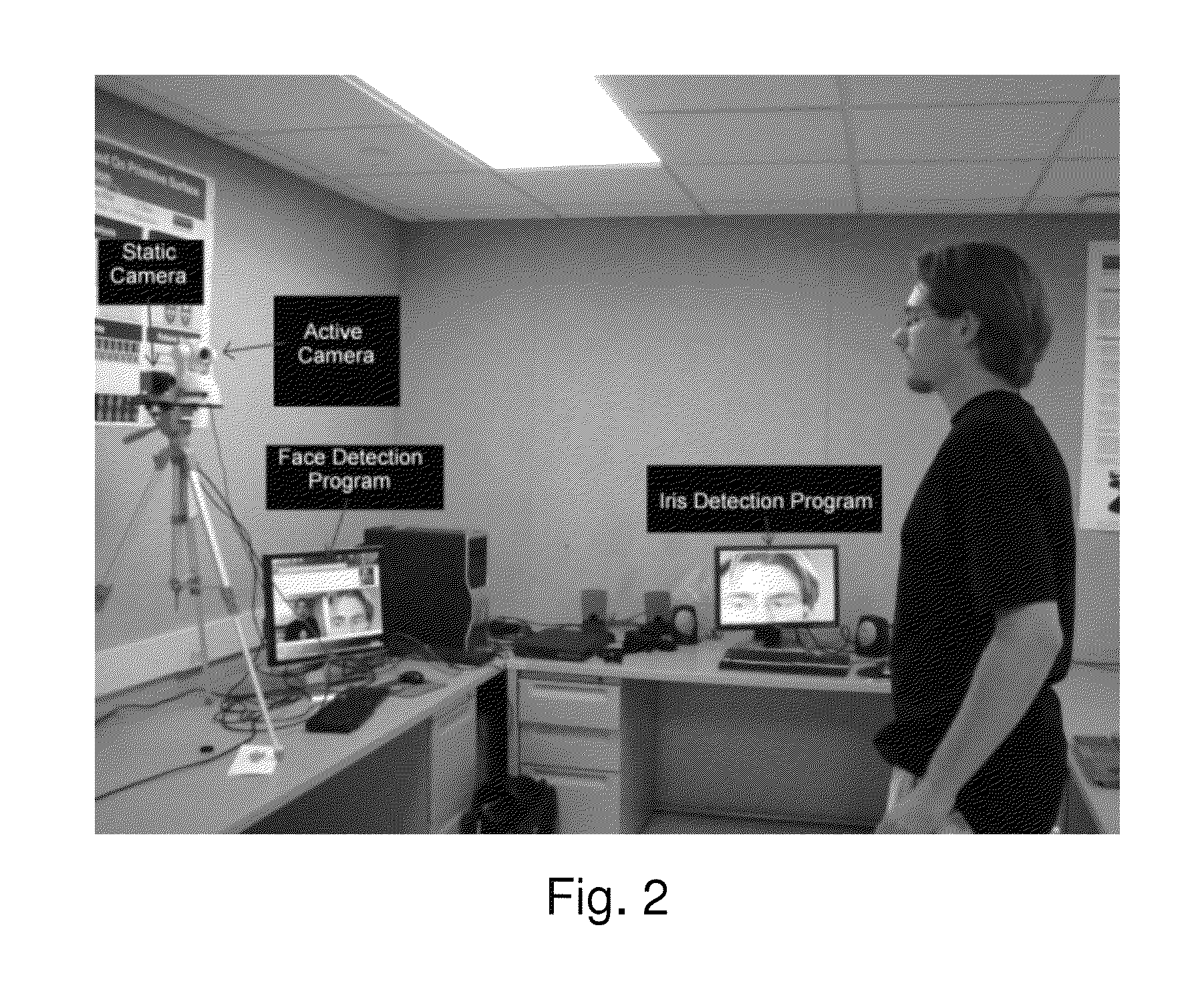Real time eye tracking for human computer interaction
a technology of computer interaction and eye tracking, applied in the field of real-time eye tracking for human computer interaction, can solve the problems of reducing the reflectivity of the retina of contact lenses, affecting the user's experience, and affecting the user's perception, so as to achieve more intelligent behavior, increase flexibility, and facilitate interaction
- Summary
- Abstract
- Description
- Claims
- Application Information
AI Technical Summary
Benefits of technology
Problems solved by technology
Method used
Image
Examples
Embodiment Construction
[0062]The complete system consists of five different stages: face detection, eye area detection (wide-angle view), camera control, iris detection (narrow-angle view), and gaze calibration / estimation (narrow-angle view). The first three are part of one program, while the last two are part of another; these two programs run on separate computers. According to one embodiment, an IEEE 1394 camera is used for the wide-angle view; images from this camera are used for face detection. Once a face and eye area center are detected, the detection program controls a SONY SNC-RZ30N camera, which can pan ±170° and tilt from −90° to +25°. It also has a 25× optical zoom. This camera gives us a close-up view of the face (640×480 images at approximately 15 to 30 fps), which can then be used by the eye detection program. FIG. 1 depicts the system composition, while FIG. 2 depicts the system in action. In the integrated system, the gaze estimation uses the active camera view, and the iris centers and c...
PUM
 Login to View More
Login to View More Abstract
Description
Claims
Application Information
 Login to View More
Login to View More - R&D
- Intellectual Property
- Life Sciences
- Materials
- Tech Scout
- Unparalleled Data Quality
- Higher Quality Content
- 60% Fewer Hallucinations
Browse by: Latest US Patents, China's latest patents, Technical Efficacy Thesaurus, Application Domain, Technology Topic, Popular Technical Reports.
© 2025 PatSnap. All rights reserved.Legal|Privacy policy|Modern Slavery Act Transparency Statement|Sitemap|About US| Contact US: help@patsnap.com



